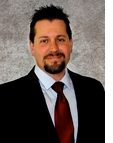
| April 2015 | Past Issues | Printer-Friendly | Advertise | Affiliates Search | Find a Pest Control Operator | PCOC.org |
|
EVP NOTES
As you know, PCOC puts on a Leadership Academy. The event is designed to train future leaders in our industry and is an invaluable opportunity to develop skills that transcend involvement in PCOC. In fact, I believe, it was one of the most important things that we do as an association. It is absolutely critical that we raise up new leaders within our industry as we look forward five to 10 years. This year Leadership Academy will take place May 29 & 30 at the Catamaran Resort in San Diego. Each district is invited to send its Chairman and Vice Chairman for the upcoming year. Don’t be put off by this though! Anyone can attend. Attendees come away with abilities and ideas that they can use for the rest of their life. Here are some of the topics that we cover:
We should all be proud of this significant event, put
together by YOUR association. If you would like to attend, please contact your
District Chair or myself!!!! IN MEMORIAM: Dan Prechtl. President, Beneficial Exterminating. Chair, LEGISLATIVE UPDATE
IN THE NEWS
 SPCB Interested Parties Meeting to
Discuss Publication of Examination Study Guide SPCB Interested Parties Meeting to
Discuss Publication of Examination Study Guide
On April 28, the Structural Pest Control Board (SPCB) is having a special meeting regarding the creation of study materials. Parties interested in creating study materials should appear. Representatives of PCOC will be in attendance. See attached FLIER for details. SPCB EXAM WORKSHOPS — APPLICATORS AND NEW FIELD REPS NEEDED The Structural Pest Control Board needs help from applicators and new field reps performing branch 2 & 3 tasks. They need licensees with experience and knowledge to help create additional questions for the new computer based exam. Attendees will receive: Continuing education, $125 per day, reimbursement for hotels, meals, mileage, tolls and parking as well as airfare and car rental if you live in Southern California. The workshops will take place in Sacramento April 29 & 30, 2015. For additional information including contact info, please see attached FLIER. BEE BEHAVIOUR MAPPED BY TINY TRACKERS Article repurposed from http://www.bbc.com/news/technology-32033766 Technology reporter, BBC News A tiny new tracker designed to monitor bee behaviour is being tested by ecologists at Kew Gardens in London. It is made from off-the-shelf technology and is based on equipment used to track pallets in warehouses, said its creator Dr Mark O'Neill. Readers, used to pickup a signal from the kit, are connected to Raspberry Pi computers, which log the readings. The device has a reach of up to 2.5m (8.2ft). Previously used models were restricted to 1cm (0.4in). The tracker consists of a standard RFID (radio frequency identification) chip and a specially designed aerial, which Dr O'Neill has created to be thinner and lighter than other models used to track small insects, allowing him to boost the range. The engineer, who is technical director at the Newcastle-based tech firm Tumbling Dice, is currently trying to patent the invention. "The first stage was to make very raw pre-production tags using components I could easily buy", he said. "I want to make optimised aerial components which would be a lot smaller." "I've made about 50 so far. I've soldered them all on my desk - it feels like surgery." The average "forage time" for a worker bee is around 20 minutes, suggesting they have a forage range of around 1km (0.6 miles) , Dr O'Neill explained. The idea is to have readers dotted around a hive and flower patch in order to track the signals as the bees move around freely in the wild. Chilled bees The tiny trackers, which are just 8mm (0.3in) high and 4.8mm (1.9in) wide, are stuck to the bees with superglue in a process which takes five to 10 minutes. The bees are chilled first to make them more docile. "They make a hell of a noise," acknowledged Dr O'Neill. He told the BBC he hoped that the trackers - which weigh less than a bee and are attached at their centre of gravity so as not to affect their flight - would remain attached for their three-month expected lifespan. They have only been fitted to worker bees, which do not mate. "If an animal ate one, I guess it would have a tracker in its stomach," Dr O'Neill said. "But the attrition rate for field worker bees is very low. Most die of old age - they are very competent, and good at getting out of the way." Dr Sarah Barlow, a restoration ecologist from Kew Gardens, was involved in testing the as-yet unnamed trackers. "These tags are a big step forward in radio technology and no one has a decent medium to long range tag yet that is suitable for flying on small insects," she said. "This new technology will open up possibilities for scientists to track bees in the landscape. "This piece of the
puzzle, of bee behaviour, is absolutely vital if we are to understand better
why our bees are struggling and how we can reverse their decline." FUMIGATION BANNER CONTEST: March 1- May 31, 2015 Flier
Etex / Electro-Gun
Termite Control Celebrating 35 years providing a non-chemical termite treatment product to PCO's throughout the USA! Call and find out the benefits of leasing www.etex-ltd.com UPCOMING EVENTS
2015
Leadership 2015 — May 29-30, 2015 Catamaran Resort — San Diego
PCOC Expo 2015 — June 25-27, 2015 Hyatt Regency — Monterey, Calif.
FLIER Hotel Reservation Board of Directors Meeting — September 25- 26, 2015 Catamaran Resort — San Diego Board of Directors Meeting — December 11-12, 2015 Palm Springs Hilton — Palm Springs, Calif. Comings and Goings
Welcome to a new section of Newsbriefs! Here, we will give news from our members: new hires, retirements, etc. If you have some news you would like to share, please send a short sentence or two to breann@pcoc.org. MEMBER NEWS
MEMBER VALUE PROGRAM
PCOC MONTHLY INSURANCE/SAFETY TIP
How Much Do Double-Dippers Cost You?
In California, totally disabled workers receive two-thirds of their average weekly wage, subject to a maximum. But workers' compensation benefits do not count as taxable income. When workers receive other benefits due to their disability (called double dipping), their total benefits can approach or even exceed pre-disability earnings. This gives them little incentive to return to work.
What Employers Should Look For
Fortunately for employers, most health and disability insurance programs have coordination of benefits provisions. These provisions prevent overinsurance by reducing the benefits the policy will pay by amounts the claimant receives from other sources, including workers' compensation.
Possible sources of overinsurance include the following:
Group long-term disability policies: The typical disability policy provides a monthly benefit equaling 60 percent of the employee's pre-disability wages, subject to a maximum. If your organization offers group disability income insurance, make sure your plan includes a coordination of benefits provision. Most (but not all) individual disability policies also contain coordination of benefits provisions.
Social Security disability insurance (SSDI): Social Security pays disability benefits only for total and permanent disability. Individuals can receive both SSDI and workers' compensation benefits, but Social Security will reduce the amount of any SSDI benefits by amounts received from workers' compensation. The combined total of workers' compensation and SSDI benefits cannot exceed 80 percent of the worker's average current earnings.
Unemployment benefits: California requires a person to be physically able to work and ready and willing to immediately accept work to receive unemployment benefits. That would usually eliminate someone on workers' compensation.
Sick leave: Many employers allow employees to use sick leave, vacation leave and personal leave to supplement their workers' compensation benefits. Make sure your plan documents prohibit a worker who is claiming workers' compensation benefits from receiving more than his/her pre-disability pay.
State disability: In California, workers can receive both workers' compensation and state disability insurance benefits for the same period of time only in limited situations. State disability may pay the difference if workers' compensation benefits are less than the disability benefits the worker is eligible for.
Auto insurance: Personal auto policies often contain personal injury protection (PIP). PIP pays the insured's medical bills, loss of income and other costs related to an auto accident, regardless of fault. You might be able to deduct the amount of PIP benefits from workers' compensation benefits. Your workers' compensation insurer's claims department will know the applicable laws.
Other Sources of Income for Injured Workers
Lawsuits: Workers' compensation law prevents workers from suing employers for workplace injuries. However, they can sue a third party (someone besides the employer or a co-worker) who causes or contributes to their injury — such as the manufacturer of defective equipment that causes injury.
Unlike the workers' compensation system, the tort system allows a lawsuit's prevailing party to receive compensation for pain and suffering, property damage, loss of monetary support, loss of consortium, disfigurement and sometimes punitive damages, in addition to lost time. When an employee on workers' compensation collects damages or settlements, the employer's insurer or the can "subrogate," or claim a credit against damages or settlements received. Subrogation prevents an injured worker from collecting for the same injury twice.
Other employment: People who work under the table at physically demanding jobs while claiming workers' compensation for an injury are going beyond double dipping and committing fraud. If you suspect fraud, contact your insurer. For more suggestions and other information on improving safety in your organization, please contact the PCOC Insurance Program department of EPIC at (877) 860-7378 or, email us @ ProPest@epicbrokers.com.
NEW MEMBERS
FREQUENTLY REQUESTED INFORMATION
NPMA LOGIN FOR JOINT MEMBERSHIP LOGIN: 313501 PASSWORD: PCOC
Department of Food & Agriculture Department of Pesticide Regulation (DPR)
www.cdpr.ca.gov DPR on Facebook www.facebook.com/capesticideregulation DPR on YouTube (see "playlists" for videos pertaining to new surface water regulations) www.youtube.com/user/californiapesticides DPR on Twitter twitter.com/ca_pesticides DPR LinkedIn www.linkedin.com/company/california-department-of-pesticide-regulation Healthy Schools Act http://apps.cdpr.ca.gov/schoolipm/ Structural Pest Control Board www.pestboard.ca.gov Find Your Legislator |
Pest Control Operators of California |
 |






